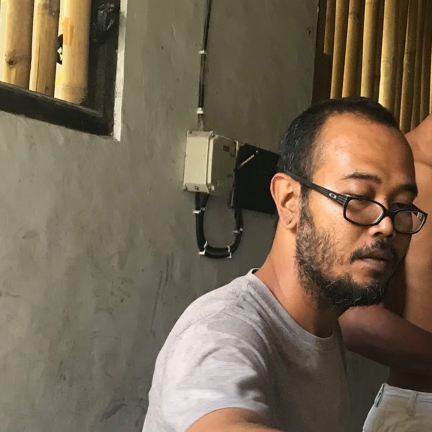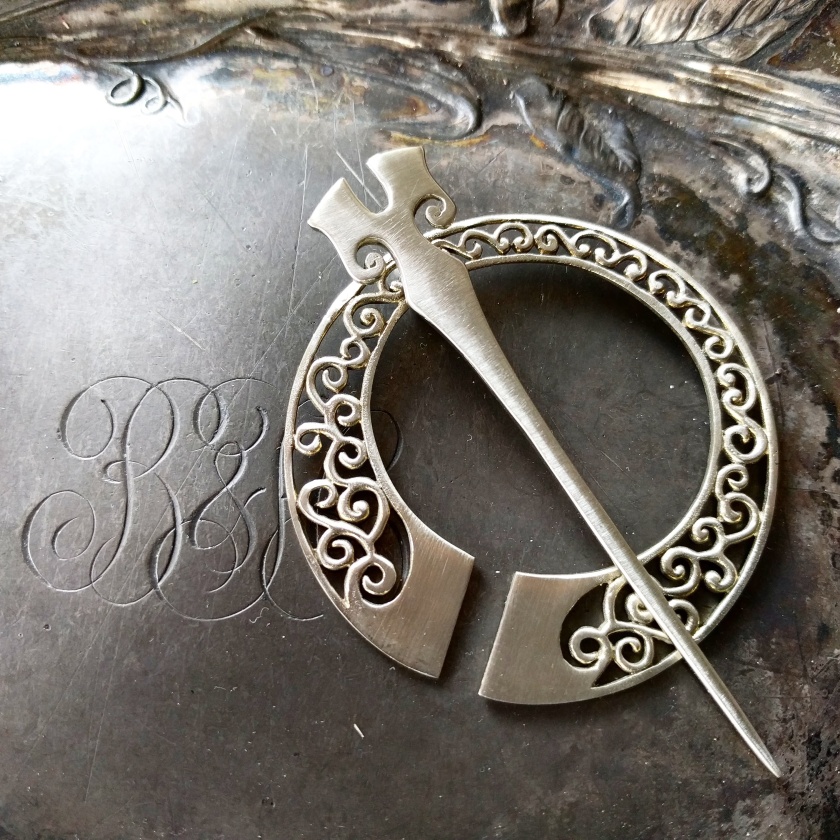For those of you who have purchased a JUL Designs shawl pin (and have read the information on the packaging), you know that most of them are “Handmade Fair Trade in Indonesia” in White Brass (the rest are made in the USA). But what does this really mean? In this first installment of a biography of a shawl pin I start to tell you, and more importantly, to show you by sharing with you videos and images I took during a month-long trip to Bali, which is the location in Indonesia where I have JUL knitwear and body jewelry designs made.
The objectives of this month-long trip in July were three-fold. First, I had product-development goals to launch with Agus, my Balinese collaborator and a critical partner in the creation and production of JUL knitwear and body jewelry designs.


Second, I wanted to meet our new artisans, whom I had not yet met given that the last time I was in Indonesia was five years ago! And third, I wanted to document the product development and production processes for you as I worked with my son and my creative partner and artisans.

I want you to be able to see how many hands touch each piece you purchase. And I want you to be able to see the relationships I have with my creative partners and artisans. I speak the language(s). I understand the culture. I have deep connections to the place going back over 20 years. I have dear friends and family there. I don’t just broker through a third party.
For JUL, Fair Trade is not a vague notion of doing business directly with producers. For us, Fair Trade is specific. It means we are committed to people we care about. We have collaborative relationships with artisans we have been working with for years. Having such long term working relationships means they understand our designs, which are mostly not conventional jewelry, and can work with us to develop creative solutions to the production and design challenges we encounter. Fair Trade means we know exactly how our products are produced, under what conditions and by whom. It means our artisans determine what we pay them for the products we ask them to make, based on how complex the designs are, how much time and effort each one takes, and what they need to support their families. Fair Trade for us is truly fair.
So how do I show you these relationships, these production processes? We tracked production of one product – the Runa Penannular Brooch – from start to finish using photographs and videos.
This mosaic of images above gives you a sneak peek at what I will be describing to you in some depth over the next few posts. In the upper left is the wax for the ring part of the Runa. Upper right shows flasks of plaster molds for the Runa being vacuumed to remove air bubbles that can damage the casting. Lower left shows metal being heated to pour into one of those molds. Center shows raw Runa components after they have been cast. Lower right shows a Runa ring component being cleaned up and smoothed during the finishing process before the stick has been added and soldered in place.
This production process takes the Runa Penannular Brooch through twelve pairs of hands just to come into being, and ultimately to adorn your knitwear.

Next installment: From Wax to Raw Metal.







I love these pics from Bali! Love seeing how your beautiful creations are made – you just need to be in the pics!
LikeLiked by 1 person
I have videos where I am participating so you will see some with me soon! Problem is I have to edit them so you can hear us talking. Right now there is a lot of noise in the videos (many production processes are not quiet) so you can barely hear the conversation (3 languages!). So, coming soon. I think everyone will want to feel involved in the conversations.
LikeLike